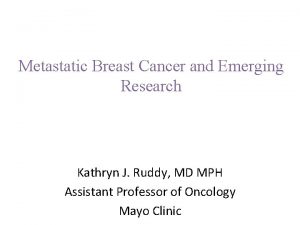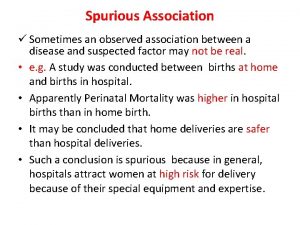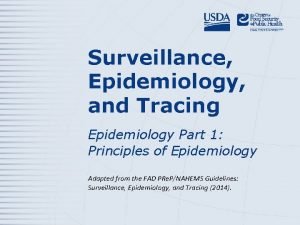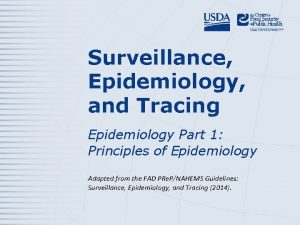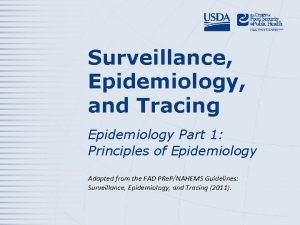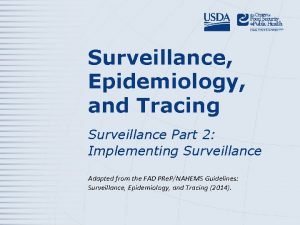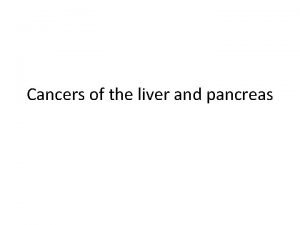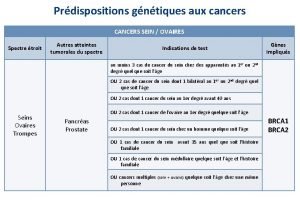The Canadian Partnership Against Cancers Surveillance and Epidemiology























- Slides: 23

The Canadian Partnership Against Cancer’s Surveillance and Epidemiology Networks: The C-SPAN Methodology Working Group Journey: Decisions Along The Way NAACCR 2010 Annual Conference Quebec City, June 19 -25, 2010 Katherine Fradette Cancer. Care Manitoba

Cancer Survival and Prevalence Network (C-SPAN) A collaborative effort to analyze, synthesize and disseminate cancer-related survival and prevalence information to a wide audience by: • Developing networks of users and analysts • Promoting the use of standard analytic tools • Ensuring information products are designed to accelerate the production and dissemination of survival and survivorship statistics to inform cancer control activities

Introduction • C-SPAN is bringing Canadian analysts together through the C-SPAN Methodology Working Group • Analytic capacity development is a primary C- SPAN target • Providing forums for networking • Developing standard, agreed upon, approaches to calculating cancer survival and prevalence

C-SPAN Methodology Working Group • Larry Ellison (Statistics Canada) • Gina Lockwood (The Canadian Partnership Against Cancer) • Ryan Woods (BC) • Norm Phillips (BC) • Mengzhe Wang (Alberta) • Loraine Schack (Alberta) • Riaz Alvi (Saskatchewan) • Tong Zhu (Sasckatchewan) • • Donna Turner (Manitoba) Huimin Lu (Manitoba) Janet Nowatzki (Manitoba) Giselle Mak (Manitoba) Zoann Nugent (Manitoba) Madeline Kells (Manitoba) Roberta Koscielny (Manitoba) • Jean-Marc Daigle (Quebec) • Rabia Louchini (Quebec) • Diane Nishri (Ontario) • Jin Niu (Ontario) • Ron Dewar (Nova Scotia) • Bin Zhang (Newfoundland)

Background By collaborating with Methodology Working Group analysts, C-SPAN has created standard analytic products for relative survival • • SAS programs for data extraction and preparation and accompanying user’s guides a) First primary extraction program b) Multiple primaries extraction program • SAS and Stata cohort and period relative survival programs and user’s guides

Background • To create the standard tools for survival analysis, the Methodology Working Group discussed survival analysis decision points • Methodological decisions needed to be made, regarding: • The choice of life tables • The inclusion of first primaries or multiple primaries, and • The choice of multiple primary coding rules

First primaries or Multiple Primaries? • Initially we assumed survival estimates would be restricted to first primary cancers but… • The proportion of tumours excluded from first primary analysis varies among registries, depending on things like registry running times • Often the result of restricting to first primary cancers is a variation in survival estimates • • Brenner and Hakulinen argue that even where there are no differences in survival estimates, restricting to first primaries “is unnecessary and only reduces precision” • So the group determined that survival estimates should be computed for multiple primaries as well

Multiple Primary Coding Rules • Different provinces use different coding rules (CCR, SEER, IARC) • There was a need for a way to transform provincial data when the goal is to produce nationally comparable estimates • The consensus was to transform provincial data using 2002 IARC rules (CCR/IARC rules) • A macro for transforming data to CCR/IARC rules, developed by analysts in Alberta and shared with the C-SPAN group

Choice of Life Tables • Choice of life tables can also affect relative survival estimates • The Working Group decided to use provincial life tables shared by Larry Ellison (LE lifetables) • Provide probabilities of surviving one year by province, sex, attained age and attained calendar period

Methods • 5 -year relative survival estimates were compared to determine the impact of different decision points made in survival analysis • Data from two Canadian provinces: Manitoba and Alberta • Considered the top 4 invasive cancers (Lung, Colorectal, Breast, Prostate) diagnosed in: • • • 1997 -1999 (cohort survival) 2003 -2005 (period survival) Follow-up to the end of 2007

Methods • We investigated the impact on 5 -year relative survival ratios of: a) Including only 1 st primary tumours or all primaries (mult primaries) in survival analysis b) Using life tables prepared by each province (AB or MB life tables) or LE life tables c) Using the multiple primary coding rules employed in each province (AB/SEER or MB/CCR) or converting each registry’s data to the CCR/IARC multiple primary rules

Results • Life tables contributed to the biggest differences in relative survival estimates in Alberta • Differences of approximately 5% were observed for colorectal cancer

Alberta Cancer Registry 5 -Year Relative Survival, Colorectal Cancer

Results • Smaller differences were observed between Manitoba life tables and Larry Ellison’s life tables • A maximum difference of 2% was observed in prostate cancer

Manitoba Cancer Registry 5 -Year Relative Survival, Prostate Cancer

Results • Including all primaries compared to first primary only made the biggest difference for prostate cancer in both provinces • The survival ratio for prostate decreases by about 2 – 2. 5 % when considering all cancers compared to first primary only • Including all primaries compared to first primaries made little difference for other cancer sites

Alberta Cancer Registry 5 -Year Relative Survival, Prostate Cancer

Manitoba Cancer Registry 5 -Year Relative Survival, Prostate Cancer

Results • Different multiple primary coding rules contribute only small differences (<. 5%)

Alberta Cancer Registry 5 -Year Relative Survival, Fem. Breast Cancer

Manitoba Cancer Registry 5 -Year Relative Survival, Fem. Breast Cancer

Results - Summary • Life tables contributed to the biggest differences in relative survival estimates • Larger differences in Alberta than Manitoba • Including all primaries compared to first primary only makes the biggest difference for prostate cancer • Including all primaries compared to first primaries accounts for smaller differences in other cancer sites (usually < 1%) • Different multiple primary coding rules contributed only small differences (<. 5%)

Production of this training workshop has been made possible through a financial contribution from Health Canada provided by the Canadian Partnership Against Cancer. The views expressed herein do not necessarily represent the views of the Canadian Partnership Against Cancer nor that of Health Canada.
 Female reproductive system
Female reproductive system Her2 positive cancers
Her2 positive cancers Canadian league against epilepsy
Canadian league against epilepsy Thesourceagents
Thesourceagents Advantages and disadvantages of nutritional epidemiology
Advantages and disadvantages of nutritional epidemiology Descriptive vs analytical epidemiology
Descriptive vs analytical epidemiology Prevalence vs incidence
Prevalence vs incidence Cbic recertification
Cbic recertification Epidemiology person place time
Epidemiology person place time Ukuran asosiasi statistika
Ukuran asosiasi statistika Logistic regression epidemiology
Logistic regression epidemiology Prevalence rate formula
Prevalence rate formula Classification of epidemiological studies
Classification of epidemiological studies Attack rate epidemiology formula
Attack rate epidemiology formula Pros and cons of cross sectional study
Pros and cons of cross sectional study Association and causation
Association and causation Attack rate epidemiology formula
Attack rate epidemiology formula Gate frame epidemiology
Gate frame epidemiology Web of causation vs wheel of causation
Web of causation vs wheel of causation Defination of prevalence
Defination of prevalence Defination of epidemiology
Defination of epidemiology Epornithic
Epornithic What is descriptive study in epidemiology
What is descriptive study in epidemiology Spurious association in epidemiology
Spurious association in epidemiology

